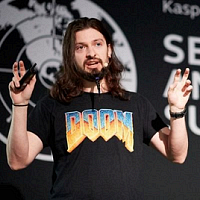Sharon Mudd (Carnegie Mellon University / CERT, US), Vanessa Rodriguez (Carnegie Mellon University / CERT, US)
Cybersecurity and Incident Response professionals use the word “risk” to mean many things, from threats and threat actors to vulnerabilities or potential impacts. So, what exactly does “risk” mean, and what are the critical building blocks for defining risks for an organization? Key questions risk managers strive to answer revolve around what needs to be protected, how critical is it to the organization, which security measures are effective, and what are the potential consequences of these measures failing? When organizations establish priorities for protective measures, they need to get key players in the organization on the same page. The starting point for these higher-level goals is to develop a practical understanding of how to think about “risk,” which is often fundamentally different than how the term gets used. Understanding risk identification and management is critical for building effective risk assessments, prioritization strategies, and incident response processes.
This session redefines common misconceptions about security risk by examining the real-world scenarios for understanding and managing risk that every cybersecurity person needs to know. Concepts explored in this workshop have been used to challenge information security leaders and incident response personnel across the world, allowing them to step back from a black-and-white perspective of cybersecurity. This helps them have more nuanced conversations about how security is implemented and how risk is evaluated. The fundamentals learned through interactive discussions are exciting and educational for up-and-coming cybersecurity professionals and seasoned leaders. Attendees will learn the building blocks for developing or enhancing the context needed to evaluate and prioritize security risks. This session helps to lay the groundwork for moving away from a reactionary approach towards a more proactive approach for securing critical data and systems.
For incident responders, the session sets the stage for better engagement with constituents on protection measures they have in place - before an incident occurs. To gauge the impact of an incident, it’s critical to understand where key assets are located, how critical the data is to the organization, and what is required to manage the associated risk. This discussion helps incident responders become more proactive in these discussions with their constituents and helps drive appropriate urgency for response activities. The CSIRT teams that have been through this session have found it to be entertaining, enlightening, and thought-provoking because it challenges their assumptions about how to think and talk about risk.
Sharon Mudd is currently a Senior Cybersecurity Operations Researcher in the CERT® division of the Software Engineering Institute @Carnegie Mellon University, helping international teams build security operations and incident management capabilities. In this role, she provides mentoring and training on a broad range of cybersecurity topics to foster the development of maturity for security incident response and security operations teams internationally. Her career spans over 30 years in IT and information security roles, focusing on information security governance, risk management, compliance, and assurance. She has been a GRC leader in several organizations with global information security responsibilities across a diverse set of industries, including financial services, retail, education, government, telecommunications, and healthcare. Sharon is also in the process of completing a PhD in Information Assurance and Cybersecurity.
Vanessa Rodriguez is currently an Assistant Cybersecurity Operations Researcher in the CERT® division of the Software Engineering Institute @Carnegie Mellon University, helping international teams build security operations and incident management capabilities. In this role, she provides mentoring and training on a broad range of cybersecurity topics to Spanish-speaking countries. Her career spans over four years in Computer Science and information security roles, focusing on software development, secure coding, and cybersecurity research. Vanessa recently finished her Master's Degree in Information Technology - Information Security at Carnegie Mellon University, focusing on courses in Forensics and IoT security.

















